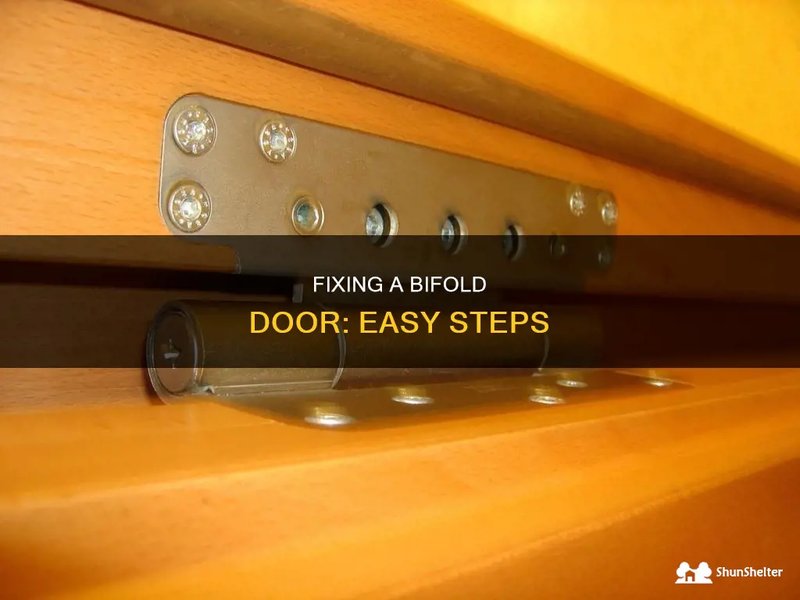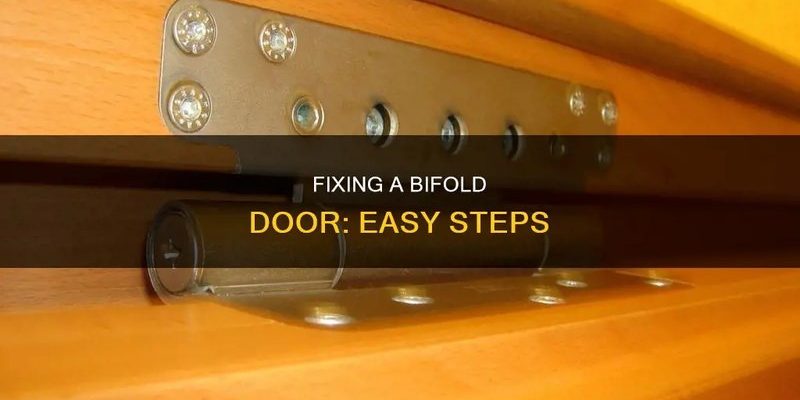
Understanding how to fix a bifold door that won’t stay closed is simpler than you might think. It often involves a few adjustments and checks on the hardware. You don’t need to be a DIY expert to tackle this job. With some basic tools and a little patience, you can have that door operating smoothly again in no time. Let’s dive into the step-by-step process to get things back on track.
Identify the Problem with the Bifold Door
Before you start adjusting anything, it’s crucial to figure out what’s causing the issue. Think of the bifold door like a puzzle. If one piece is out of place, the whole thing doesn’t work right. Common culprits include misalignment, worn hinges, or loose hardware.
First, take a close look at the door’s alignment. Does it sit flush against the door frame when closed? If there’s a gap, it could indicate that the door is hung incorrectly. You might need to adjust the top pivot or the bottom pin. Both these parts play a crucial role in keeping the door in its place.
Next, check the hinges and screws. Loose screws can create wiggle room, making it challenging for the door to stay closed. In some cases, the hinges themselves might be worn down and need replacement. Identifying the root problem will help streamline your repair process.
Gather the Necessary Tools for the Repair
Now that you’ve pinpointed the potential issues, it’s time to gather your tools. Having everything ready can save you a lot of time and frustration. Here’s a quick list of what you’ll need:
- Phillips screwdriver
- Flathead screwdriver
- Level
- Pliers
- Tape measure
- Replacement parts (if needed)
Having the right tools makes the job easier. A level is essential for checking alignment; if the door isn’t straight, it won’t close properly. A tape measure can help ensure that your adjustments are precise. And don’t forget about the replacement parts! If any of the hardware looks worn, grab a new one from your local hardware store.
Adjusting the Hinges and Pivots
With your tools in hand, it’s time to adjust the hinges and pivots. Start by inspecting the top pivot. This part helps control the door’s movement, and if it’s misaligned, the door will slide open on its own.
To fix this, use your Phillips screwdriver to tighten any loose screws in the pivot. If the pivot seems too high or low, you may need to lower or raise it slightly by loosening the screws and repositioning it.
After you’ve adjusted the top pivot, move on to the bottom pin. Similar to the pivot, if it’s not seated correctly in the bracket, it can cause the door to swing open. Adjusting both these components should help stabilize the door. After making adjustments, close the door and check if it stays put.
Check for Warping or Moisture Damage
Sometimes, the issue isn’t with the hardware but with the door itself. Wood doors, in particular, can warp over time, especially if they’ve been exposed to moisture. A warped door may not align correctly with the frame and can cause it to pop open unexpectedly.
To check for warping, stand back and look at the door from different angles. You can also run your hand along the edges. If you notice any curvature or bulging, it may be time to consider replacing the door. If it’s just minor warping, you might be able to fix it with a little heat or by applying pressure, but keep in mind that results can vary.
Stabilize the Track and Rollers
The track and rollers play a significant role in the functionality of your bifold door. If they’re dirty or misaligned, the door might not function properly. Start by inspecting the track for any debris or blockages. Clean it out gently with a cloth or a brush.
Next, check the rollers. Sometimes, they can become worn out or damaged, leading to instability. If you notice that the rollers don’t glide smoothly, it could be time to replace them. A quick trip to your local hardware store should yield replacements that fit your door model.
After cleaning and adjusting, run the door back and forth a few times. It should slide smoothly without any obstructions. If it still doesn’t close properly, you may need to revisit your hardware adjustments.
Testing and Final Adjustments
With everything adjusted, it’s critical to test the door’s functionality. Close it gently to see if it stays in place. If it still swings open, you might need to make some more adjustments.
Check that each of the screws you tightened is still secure. Sometimes tightening a screw too much can warp the hinge position, leading to further misalignment. Make small adjustments and check the door again after each tweak.
This step is also an excellent time to check how smoothly the door operates. If you notice any sticking or dragging, it may indicate that the hinges or rollers aren’t correctly aligned. Address these issues as necessary until the door functions like new.
When to Consider Replacement
If, after making all these adjustments, your bifold door still won’t stay closed, it might be time to consider replacement. Sometimes, no amount of tweaking will fix a broken door. If it’s old, damaged, or warped beyond repair, investing in a new bifold door can save you time and frustration in the long run.
When shopping for a new door, think about materials that suit your needs. Wooden doors can look beautiful but may require more maintenance. On the other hand, composite or vinyl options might be more durable and less prone to warping.
In conclusion, fixing a bifold door that won’t stay closed often involves a bit of detective work and adjustments. By identifying the root cause, gathering the right tools, and making the necessary tweaks, you can have your door functioning well again. Enjoy your newly secured space!
